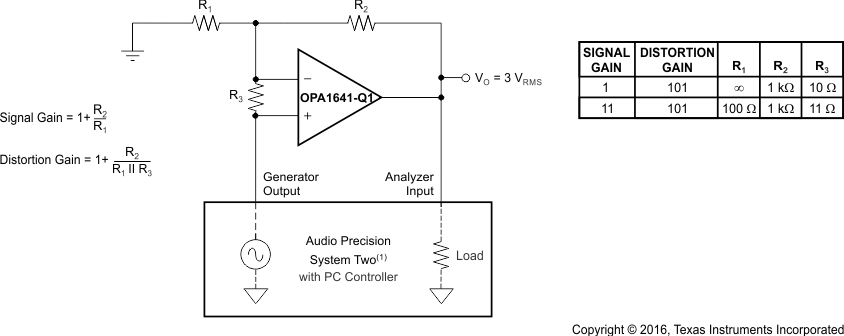ZHCSGB7A June 2017 – November 2017 OPA1641-Q1 , OPA1642-Q1
PRODUCTION DATA.
8.1.1 Total Harmonic Distortion Measurements
The OPA164x-Q1 series operational amplifiers have excellent distortion characteristics. THD + noise is below 0.00005% (G = 1, VO = 3 VRMS, BW = 80 kHz) throughout the audio frequency range, 20 Hz to 20 kHz, with a
2-kΩ load (see Figure 7).
The distortion produced by the OPA164x-Q1 series op amps is below the measurement limit of many commercially available distortion analyzers. However, a special test circuit (such as shown in Figure 33) can be used to extend the measurement capabilities.
Operational amplifier distortion can be considered an internal error source that can be referred to the input. Figure 33 shows a circuit that causes the operational amplifier distortion to be 101 times (or approximately 40 dB) greater than that normally produced by the op amp. The addition of R3 to the otherwise standard noninverting amplifier configuration alters the feedback factor or noise gain of the circuit. The closed-loop gain is unchanged, but the feedback available for error correction is reduced by a factor of 101, extending the resolution by 101. The input signal and load applied to the op amp are the same as with conventional feedback without R3. Keep the value of R3 small to minimize any effect on distortion measurements.
The validity of this technique can be verified by duplicating measurements at high gain or high frequency where the distortion is within the measurement capability of the test equipment. Measurements for this document were made with an audio precision system two distortion and noise analyzer that greatly simplifies repetitive measurements. However, the measurement technique can be performed with manual distortion measurement instruments.
space
